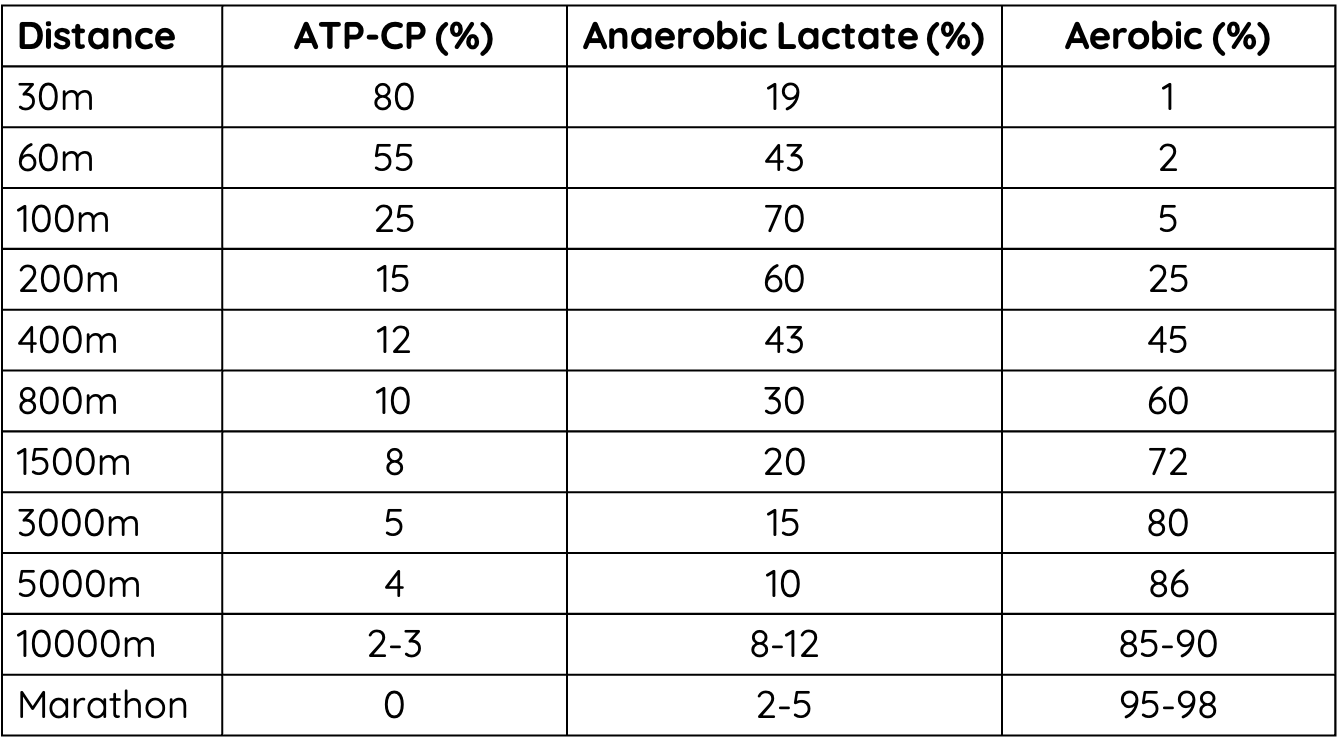How to Train for IPPT: 2.4km Run
In this article and video, we deep dive into the sports science related to the 2.4km run so that you can craft your own training plan.
Energy Systems
Firstly, it helps to understand there’re three energy systems that we can utilise when we run.
We tap into different proportions of each energy system depending on the distance of the run.

The 2.4km distance lies between 1500m and 3000m, and we can deduce that it’s mostly an aerobic activity.
The exact percentage/proportion varies per individual, but past studies have shown similar figures.
Thresholds
Our aerobic and anaerobic threshold determines how effectively we can utilise each energy system, and the way to improve our 2.4km timing is to:
- Improve aerobic threshold
- Improve anaerobic threshold
- Improve VO₂ max (which is the amount of oxygen we can utlise)
- Improve anaerobic capacity (the amount of energy we can produce without oxygen)
- Improve neuromuscular conditioning
There are many ways to improve the five areas, but to keep things simple, we’ll focus on:
- Easy runs for aerobic threshold improvement
- Tempo runs for anaerobic threshold improvement
- VO₂ max intervals for VO₂ max improvement
- Anaerobic capacity intervals for anaerobic capacity improvements
- Strides for neuromuscular conditioning improvements
Designing Your Training Plan
Easy runs will form up most of your training plan because it trains your aerobic threshold and 2.4 is mainly an aerobic activity.
Do 3–5 easy runs per week, making one of the runs 1.5–2 times longer than others. This is to prepare you to handle the load during the faster workouts.
Increase training load by 10–20% each week, de-loading on the fourth week and after a twelve-week block.
Once you’re able to hit one hour of easy run, add in a faster workout. This can be either tempo run, VO₂ max intervals, or anaerobic capacity intervals.
For most people, tempo run and VO₂ max intervals will result in greater 2.4km improvements as they are mostly aerobic activities.
Insert strides as warm-up for intervals or at the end of easy runs to work on running form.
Refrain from planning back-to-back long easy run and either of the faster runs, as your body might not be able to fully recover, leading to overuse injury.
Sets for Each Type of Workout
Easy run: conversational pace, up to an hour
Tempo run: 20–30min at 10km race pace
VO₂ max intervals: sets of 300m-1200m, jog for half the distance or same amount of time ran for recovery
Anaerobic intervals: 100–400m, jog twice the distance as recovery
Strides: 50–200m, near maximum pace, walk or jog distance as recovery
References
Energy System Contribution to 1500- and 3000-Metre Track Running
Energy System Contributions in Middle-Distance Running Events
Anaerobic Threshold: Its Concept and Role in Endurance Sport
How Do Novice Runners With Different Body Mass Indexes Begin a Self-Chosen Running Regime?
The Start-to-Run Distance and Running Related Injury Among Obese Novice Runners: A Randomise Trial
